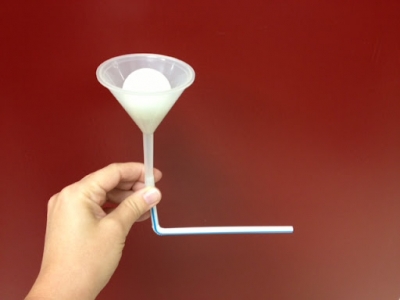
Do you know that we are surrounded by air and that it pushes down really hard against us? This push of the air is called air pressure. We don’t feel too much of this pressure because air molecules exert equal pressure in all directions, balancing themselves out. Also, the air pressure inside our bodies stays almost equal to the air pressure around us, preventing the air from crushing us like empty soda cans (yes, it’s that powerful!). But, let’s not focus on the horrors of air pressure, let’s turn to its wonders instead.
What you need:
Two ping pong balls
Some modelling clay
Two straws
A hair dryer
What to do:
1. Make a mound of clay and stand two straws upright on it, parallel to each other. Make sure that they are still able to move slightly though (without falling over).
2. On the tops of the straws, use some modelling clay to stick two ping pong balls-one on each straw. Make sure the balls are level.
3. Switch on the hair dryer. Position it directly above the balls so that its jet of air passes right between both the balls.
What happens:
The balls move closer together!
Why?
Daniel Bernoulli, an 18th-century Swiss mathematician and physicist, is remembered for giving us something known as Bernoulli’s principle that applies to moving fluids (since air flows, it is also considered a fluid). According to this principle, the faster the air flows over a surface, the less it pushes on the surface i.e. the pressure exerted by the air on that surface decreases.
The hair dryer shoots out fast-moving air. When the air stream passes between the two ping pong balls, it exerts less pressure on the balls in that zone. But the air pressure of the surrounding air on the balls does not go down. Which means that the surrounding air kind of pushes the balls towards the centre where the push of the air has lowered. That is why the balls come together. If you look carefully, on windy days, you can see the tops of very tall buildings also tilting towards each other. Thanks to Mr. Bernoulli, now you know why that happens!
Picture Credit : Google




